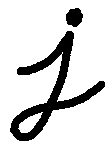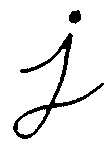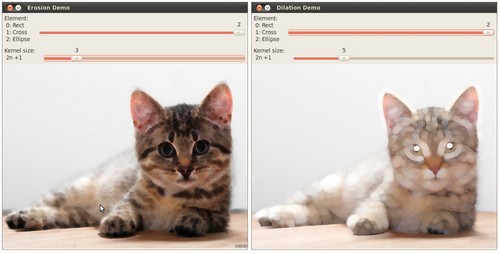基於OpenCV的膨脹和腐蝕
阿新 • • 發佈:2018-12-31
本部落格講解形態雪中的膨脹和腐蝕操作。使用的函式為:
cv::erode
cv::erode
cv::dilate
形態學操作
簡而言之:一組基於形狀的影象處理的操作。形態學運算對輸入影象應用astructuring元素生成一個輸出影象。
最基本的形態操作是兩個:腐蝕和膨脹。他們有一個廣泛的用途,即:
- 去除噪聲
- 單個元素的分離和影象中的分離元素的連線
- 發現影象中的強度顛簸或空洞
我們將簡要地解釋擴張和侵蝕,使用下面的影象作為一個例子:
Dilation
- 該操作由卷積影象 A 和某個卷積核 ( B)的卷積完成,卷積核可以有任何形狀或大小,通常是一個方形或圓形.
- 卷積核
B
有一個定義的錨定點( anchor point), 通常是核心的中心.
-
隨著卷積核 B 掃過影象, 我們計算由卷積核 B 覆蓋的的畫素的最大值,並用該最大值替換在錨定點位置的影象畫素。 可以推斷,這種最大化的操作使影象內明亮區域“生長”(也就是所謂的膨脹)。以上面的圖片為例。應用擴張,我們可以得到:
圍繞黑色字母區域的背景 (亮的區域) 的膨脹
Erosion
這個操作是在核心重疊區域上計算一個區域性最小值.
隨著卷積核B 掃過影象, 計算有卷積核 B 覆蓋部分畫素的最小值,並用最小值替換在錨定點的影象畫素.
和dilation的例子一樣,我們可以對原始影象應用腐蝕運算元。你可以看到在下面的結果,影象的明亮區域(背景,顯然的),變得更薄,而黑暗的區域(“書寫”部分)變得更大。
/** * @file Morphology_1.cpp * @brief Erosion and Dilation sample code * @author OpenCV team */ #include "opencv2/imgproc.hpp" #include "opencv2/imgcodecs.hpp" #include "opencv2/highgui.hpp" using namespace cv; /// Global variables Mat src, erosion_dst, dilation_dst; int erosion_elem = 0; int erosion_size = 0; int dilation_elem = 0; int dilation_size = 0; int const max_elem = 2; int const max_kernel_size = 21; /** Function Headers */ void Erosion( int, void* ); void Dilation( int, void* ); /** * @function main */ int main( int, char** argv ) { /// Load an image src = imread( argv[1], IMREAD_COLOR ); if( src.empty() ) { return -1; } /// Create windows namedWindow( "Erosion Demo", WINDOW_AUTOSIZE ); namedWindow( "Dilation Demo", WINDOW_AUTOSIZE ); moveWindow( "Dilation Demo", src.cols, 0 ); /// Create Erosion Trackbar createTrackbar( "Element:\n 0: Rect \n 1: Cross \n 2: Ellipse", "Erosion Demo", &erosion_elem, max_elem, Erosion ); createTrackbar( "Kernel size:\n 2n +1", "Erosion Demo", &erosion_size, max_kernel_size, Erosion ); /// Create Dilation Trackbar createTrackbar( "Element:\n 0: Rect \n 1: Cross \n 2: Ellipse", "Dilation Demo", &dilation_elem, max_elem, Dilation ); createTrackbar( "Kernel size:\n 2n +1", "Dilation Demo", &dilation_size, max_kernel_size, Dilation ); /// Default start Erosion( 0, 0 ); Dilation( 0, 0 ); waitKey(0); return 0; } //![腐蝕] /** * @function Erosion */ void Erosion( int, void* ) { int erosion_type = 0; if( erosion_elem == 0 ){ erosion_type = MORPH_RECT; } else if( erosion_elem == 1 ){ erosion_type = MORPH_CROSS; } else if( erosion_elem == 2) { erosion_type = MORPH_ELLIPSE; } //![kernel] Mat element = getStructuringElement( erosion_type, Size( 2*erosion_size + 1, 2*erosion_size+1 ), Point( erosion_size, erosion_size ) ); //![kernel] /// Apply the erosion operation erode( src, erosion_dst, element ); imshow( "Erosion Demo", erosion_dst ); } //![腐蝕] //![<span>膨脹</span>] /** * @function Dilation */ void Dilation( int, void* ) { int dilation_type = 0; if( dilation_elem == 0 ){ dilation_type = MORPH_RECT; } else if( dilation_elem == 1 ){ dilation_type = MORPH_CROSS; } else if( dilation_elem == 2) { dilation_type = MORPH_ELLIPSE; } Mat element = getStructuringElement( dilation_type, Size( 2*dilation_size + 1, 2*dilation_size+1 ), Point( dilation_size, dilation_size ) ); /// Apply the dilation operation dilate( src, dilation_dst, element ); imshow( "Dilation Demo", dilation_dst ); } //![<span>膨脹</span>]
例子





